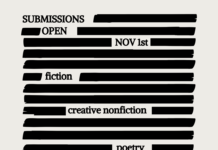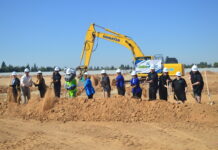
The Central Valley could be receiving much-needed help from the state level as California Gov. Gavin Newsom expanded the drought emergency declaration to 41 counties, including Fresno County, on Tuesday, May 10.
California has seen a rapid decline in water supplies in recent weeks, and as summer approaches, the decline could continue without an immediate response.
“It’s self-evident to many that the hots are getting a lot hotter in this state. The dries are getting a lot drier,” Newsom said during a news conference in Merced County.
Newsom proposed a $5.1 billion investment package over the next four years for a drought-assistant infrastructure, preparedness and climate-resilient response system.
His plan will combat the drought by focusing on immediate support, allocating $500 million to multi-benefit land repurposing for growers, $300 million to drought relief and urban water management grants and $91 million to improve drought forecasting.
A $1.3 billion portion will be for drinking water and wastewater infrastructure, especially for small and disadvantaged communities.
An additional $1 billion will go toward Californians behind on their water bills, estimated at nearly 1 million affected.
If the Legislature approves the drought and water package proposal, it would be a drop in Newsom’s proposed $100 billion “California Comeback Plan” announced earlier this week.
Newsom said that Fresno County did not need a new declaration regarding flexibility because it is still included in the last drought proclamation from 2017. He said that the state is just updating and modernizing flexibility details.
Fresno County was one of four counties excluded when the state ended the 2017 drought proclamation.
Newsom says that Californians must be mindful of their water usage and hasn’t issued any mandatory conservation measures yet, unlike his predecessor Jerry Brown did during the last drought.
Before Newsom’s declaration, numerous Central Valley counties, including Fresno, Madera, Tulare, Kings and San Joaquin, had already formally declared local emergencies.
Since March, a bipartisan coalition of Central Valley legislators and County leaders has been urging Newsom to declare an emergency to relax specific regulatory, environmental and administrative restraints and allow for water transfers to food producers.
Senate Agriculture Committee Chairman Andreas Borgeas stated in the wake of the governor’s declaration, “For weeks, our bipartisan coalition of County and state leaders in the San Joaquin Valley have urged Governor Newsom to declare a drought emergency.”
Borgeas is cautiously optimistic of the declaration but wants the state to tailor its policies toward the pressing agricultural needs and not be bogged down by bureaucratic authority.
“We respectfully caution the administration, and the divisions of the state executing this declaration, that these emergency policies not be poisoned with divisive provisions or unnecessarily inflate the authority of bureaucratic agencies,” Borgeas said.
Chairman of the Fresno County Board of Supervisors Steve Brandau said he was happy with the coalition’s effort to lead the charge in pushing for a drought declaration and was thankful that Newsom listened.
“I’m happy that the Governor finally declared a drought,” Brandau said. “Thank God he listened to our coalition of Central Valley counties. Now we need him to follow through with actual help.”
Borgeas said that the County would need more time to properly examine and understand the implications of the proposed provisions of the declaration.








